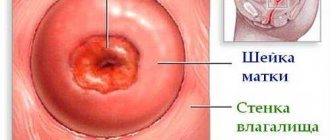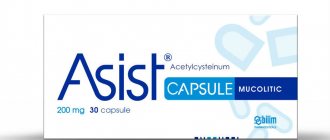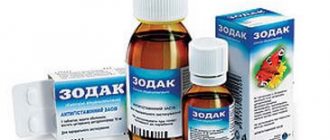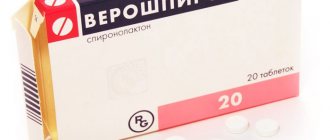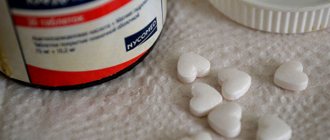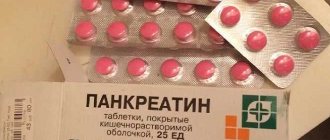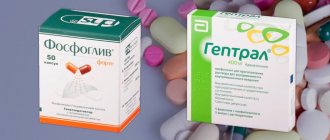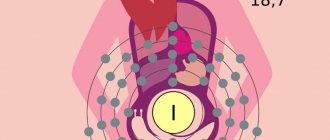Ceftriaxone in a dropper is prescribed for severe infections, when large doses of antibiotics are needed, signs of blood poisoning, and inflammation of the meninges. This method should be chosen if you are intolerant to Lidocaine, treating small children, or need to provide a quick antibacterial effect.
For one dropper, take 2 g (for children from 50 mg/kg) of the drug and 40 ml of solvent (saline, glucose, Getasorb). One infusion is given per day, but when prescribing maximum dosages, the daily amount can be divided into 2 times.
It is important that the entire volume of solution is delivered no faster than half an hour, this helps reduce the risk of complications (inflammation of the vein, precipitation of salts in the kidneys and bile ducts). Children are given IVs from birth; during pregnancy, they are contraindicated in the 1st trimester. If combined treatment is necessary, another antibiotic, Metrogyl, may be recommended, but they are administered in turn at intervals of several hours. Combination with solutions containing calcium is prohibited.
pharmachologic effect
Ceftriaxone is an antibiotic with a broad spectrum of bactericidal action. It is active against aerobic and anaerobic gram-positive and gram-negative microorganisms and is administered only by injection intravenously and intramuscularly .
The bactericidal effect of this drug occurs as a result of the inhibitory effect on the cells of pathogenic microorganisms. This product has high penetrating ability , so it is enough to administer it once a day.
The antibiotic quickly penetrates the fluids and tissues of the body. A single intravenous injection ensures maximum concentration of the drug in the blood within 30 minutes after the procedure.
After introduction into the body, Ceftriaxone begins to accumulate there in maximum quantities and remains at this level throughout the day. Its maximum amount is concentrated in the lungs, musculoskeletal system, liver, heart, and gall bladder.
The antibiotic is able to penetrate the placental barrier and affect the fetus. During treatment of nursing women, a certain amount of the drug is observed in breast milk .
Indications for use of Ceftriaxone
Instructions for use indicate that Ceftriaxone injections can be used to treat adults and children diagnosed with the following diseases:
- infectious diseases of the biliary tract and gastrointestinal tract;
- sepsis;
- diseases of joints and bones of an infectious nature;
- bacterial meningitis;
- sexually transmitted infections;
- Lyme borreliosis;
- respiratory diseases;
- infectious lesions of the skin and soft tissues;
- typhoid fever;
- endocarditis;
- salmonellosis;
- genitourinary system infections;
- microbial lesions of ENT organs.
In addition, Ceftriaxone is used to treat infectious diseases in people with weakened immune systems and as a measure to prevent complications after surgery. Pediatricians prescribe this antibiotic if a child suffers from bacterial tonsillitis, tonsillitis, scarlet fever, and the mucous membrane of the pharynx and nose is severely affected.
In addition, Ceftriaxone is used for pneumonia . Timely detection of an illness in a child ensures a minimum of complications and a quick recovery. Injections should only be given by a medical professional.
Contraindications
According to the instructions for use, Ceftriaxone injections are prohibited for persons who have hypersensitivity to its components or hypersensitivity to other penicillins and cephalosporins.
In addition, the antibiotic should be taken with caution by people with kidney disease, liver disease, enteritis and ulcerative colitis.
During pregnancy, drug injections are justified if the expected result from their action is higher than the expected risk to the fetus. In early pregnancy , when the organs and systems of the unborn child are being formed, Ceftriaxone cannot be used.
This can cause various complications and disturbances in the development of the fetus. If there is a need to use an antibiotic during lactation, then breastfeeding should be stopped , because the active substances easily penetrate into mother's milk.
Ceftriaxone: side effects
As indicated in the instructions for use, side effects may occur during treatment with the antibiotic Ceftriaxone. If they appear, you must immediately stop taking the drug. 2% of people experience the development of allergic reactions : itching, skin rashes, urticaria, dermatitis, swelling of certain areas of the skin.
Sometimes febrile conditions occur and body temperature rises . In the most severe cases, anaphylactic shock may develop after taking Ceftriaxone.
Injections of the drug are quite painful, so painkillers are used when performing intramuscular injections. a painful swelling may occur at the site of antibiotic administration , and with intravenous administration, pain along the vein and the development of phlebitis are often observed.
The central nervous system may react to the drug in the following ways: migraines, dizziness, seizures . If Ceftriaxone is used for a long time, it has a negative effect on blood vessels, the heart, heart rate increases, and nosebleeds occur. Hemoglobin may decrease and changes in blood counts may occur.
Ceftriaxone often leads to disruption of intestinal microflora , contributing to the development of dysbiosis. It is accompanied by nausea, vomiting, and diarrhea. Sometimes changes in microflora in women cause thrush or vaginitis. To prevent this, treatment should include taking medications that contain lacto- and bifidobacteria.
Ceftriaxone: side effects most often encountered
Ceftriaxone is an antibiotic with a broad spectrum of antimicrobial action; its administration into a vein or muscle often causes adverse reactions (see table).
| System or type of complications | Intravenously | Intramuscularly |
| Local reactions | Inflammation of the vein, pain along the vessel | Pain and swelling at the injection site |
| Allergy | Drug fever, increased eosinophils in the blood, swelling of the face, neck, mucous membrane, anaphylactic shock | Hives, itchy skin, rashes, red spots, chills |
| Nervous system | Headache, dizziness | |
| Digestive system | Inflammation of the oral cavity, tongue (candidal, that is, fungal stomatitis, glossitis), nausea, diarrhea, abdominal pain, salt deposits in the bile ducts, vomiting, changes in taste sensations | |
| Blood | Increased activity of liver enzymes, bilirubin, nitrogenous substances, decreased coagulation | Decrease in red blood cells, leukocytes, lymphocytes, platelets |
| Kidneys | Decreased urine filtration, protein, red blood cells, glucose in the analysis, edema, increased pressure | |
| Are common | False results of determining the Rh factor, glucose in the urine | |
The risk of side effects increases in patients at risk:
- newborns;
- aged people;
- with severe kidney and liver diseases;
- previously suffered drug-induced colitis (associated with taking an antibiotic);
- anemia;
- the need for large doses and a long course;
- tendency to allergic reactions.
According to the instructions, the following will help reduce the risk of side effects from using Ceftriaxone:
- use the drug only after examination and as prescribed by a doctor;
- exact adherence to doses and course of application;
- urgently consult a doctor if unusual symptoms appear; you should not try to eliminate adverse reactions on your own;
- refusal of intravenous administration with solutions containing calcium, as salts form and settle in the lungs and kidneys (especially dangerous for young children);
- control of blood tests; if abnormalities are detected, it is necessary to identify their connection with the use of an antibiotic;
- prohibition of alcohol consumption;
- exclusion of salty, spicy and fatty foods from the diet;
- sufficient consumption of drinking water;
- skin tolerance test before the first administration of the antibiotic.
Monitoring blood tests
Elderly, weakened patients may need vitamin K, and if there is a risk of fungal infection (course of 7 days), antifungal agents may be needed.
The doctor often recommends taking probiotics (Linex, Laktofiltrum) to normalize the intestinal microflora. They can be replaced by daily consumption of fresh fermented milk drinks (those prepared independently using pharmacy starters work better).
Lactofiltrum Linex
Administration of antibiotics is contraindicated in:
- intolerance to Ceftriaxone or an antibacterial drug from the group of cephalosporins, penicillins and other beta-lactam drugs (for example, Tienam);
- the age of the newborn is up to 28 days and the presence of increased bilirubin in the blood, jaundice, decreased protein or increased acidity;
- the need to administer drugs containing calcium salts into a vein;
- prematurity (child's age up to 41 weeks, including intrauterine development).
Instructions for use of Ceftriaxone
For children and adults, the drug is used only for intramuscular and intravenous injections. Its use is carried out only in a hospital setting.
The dose of the drug for the treatment of children over 12 years of age and adults is 1–2 grams per day . In more complex cases it is increased to 4 grams. The dosage for the treatment of a newborn child less than two weeks old is calculated as follows: 20–50 mg of Ceftriaxone is needed per 1 kg of weight.
The dosage for infants and children under 12 years of age is 20–80 mg per 1 kg of weight . If the child’s weight exceeds 50 kg, the drug is calculated as for adults. If a small child has meningitis, Ceftriaxone is used at the rate of 100 mg of the drug per 1 kg of weight.
The dosage of the drug is calculated based on the diagnosis and severity of the disease. For some ailments, for example, when treating gonorrhea, it is enough to administer only one dose of 250 mg. The duration of treatment for syphilis depends on its stage and averages from 14 to 40 days . For other diseases, drug therapy lasts two weeks.
To prevent infections after surgery, it is necessary to administer the drug one hour before surgery. Due to the fact that injections administered intramuscularly are quite painful, the powder should be diluted in lidocaine .
For intravenous infusions, the medicine is diluted with water intended for injection.
Reviews of Ceftriaxone
Ceftriaxone - reviews from doctors confirm this fact - is a potent antibiotic that helps cure the disease in a short time and with a minimum number of side effects. It is allowed to be used for children and during pregnancy (exception - 1st trimester).
According to the patients themselves, the main disadvantage of the drug is that the injections are very painful.
In reviews of Ceftriaxone injections for children, to facilitate the procedure, mothers (on the advice of the attending physician) are recommended to use Emla cream, which is a local anesthetic. It is applied in about half an hour to the intended injection site.
In modern medicine, the trend is that doctors are increasingly prescribing Ceftriaxone injections. Reviews from patients indicate a high degree of effectiveness of this medicine, and they also praise the rapid relief of the general condition with the use of the drug already on the first day after the start of therapy. The drug is usually well tolerated. If there are any side effects, they are limited to diarrhea. But when taken simultaneously with probiotics, this can be avoided.
special instructions
When treating with the antibiotic Ceftriaxone, you should not drink alcohol because the following complications are likely to occur:
- Reduced blood pressure.
- Nausea.
- Dyspnea.
- Headache.
- Stomach cramps.
- Vomit.
- Tachycardia.
The antibiotic negatively affects the intestinal microflora, preventing the synthesis of vitamin K, so the doctor prescribes this vitamin to weakened and elderly patients. With prolonged use of the drug, it is necessary to monitor the condition of the kidneys and liver , as well as blood counts.
Sometimes, during treatment with Ceftriaxone, darkening is observed on ultrasound of the gallbladder, and the patient may complain of pain in the right hypochondrium. Despite this, therapy should not be interrupted, because after the course of treatment such phenomena disappear.
Ceftriaxone should be administered with extreme caution to a newborn baby who has been found to have excessive levels of bilirubin in the body. When treating with antibiotics, the risk of anaphylactic shock must be taken into account.
There are the following diseases when it is impossible to do without this drug. These are infectious pathologies of the genitourinary system : proctitis, cystitis, urethritis. In the most severe cases of gonococcal sepsis, an antibiotic is vital.
Thus, Ceftriaxone is a modern third-generation drug that can be used even in the treatment of newborns. According to the instructions for use, it has a large number of side effects, so in some cases it should be taken with caution .
Source lor.guru
Ceftriaxone is a low-toxic antibiotic that is used only for injections and in strict accordance with the instructions for use. It is easily tolerated by patients and is often prescribed for the treatment of bacterial infections.
Drug interactions
Ceftriaxone suppresses intestinal flora. As a result, vitamin K synthesis is reduced. Therefore, simultaneous use with drugs that reduce platelet aggregation is undesirable, as there is a risk of bleeding. Use with anticoagulants enhances their effect.
It is also not recommended to use an antibiotic with loop diuretics, as the risk of developing a nephrotoxic effect increases.
In one volume, it is pharmaceutically incompatible with other antimicrobial agents.
By suppressing intestinal microflora, it prevents the formation of vitamin K in the body. For this reason, using the drug in combination with agents that reduce platelet aggregation (sulfinpyrazone, NSAIDs) can provoke bleeding.
The same feature of Ceftriaxone enhances the effect of anticoagulants when used together.
In combination with loop diuretics, the risk of nephrotoxicity increases.
Ceftriaxone composition and active ingredient
The drug can be purchased at a pharmacy with a prescription from your doctor. However, not everyone knows which group of antibiotics Ceftriaxone belongs to - it is a third-generation drug, that is, it can only be used intramuscularly or intravenously. Ampoules of 500, 1000 and 2000 milligrams are available for sale.
Release form of the drug – powder
The drug is being developed in the form of a sodium salt. The drug penetrates the cells and tissues of all systems and has a detrimental effect on bacteria even at the stage of their reproduction. The maximum concentration of the active component with intramuscular injections is achieved in two to three hours, with intravenous injections - in a few minutes. The medicine is slowly eliminated, so its injection is given only once a day. The description in Latin indicates the name of Ceftriaxone - Ceftriaxoni, the release form is powder, which is used in the preparation of a medicinal solution. The drug is presented in transparent glass bottles packed in cardboard packaging. In pharmacies you can find the drug Ceftriaxone rls and Lexwm, which are accompanied by instructions for use with a detailed description of all the properties of the drug.
What group of antibiotics does it belong to?
Antibacterial therapy belongs to a number of cephalosporins. This is a class of substances that are most resistant to enzymes produced by the bacterial cell. The higher the resistance, the more impact the antibiotic can have on the pathogen.
In total, the class under consideration includes five groups of compounds, otherwise they are called generations. This classification is based on the chemical structure of the substance itself and its degree of resistance to bacterial enzymes. According to this classification, ceftriaxone belongs to the third generation, which indicates its very wide spectrum of action and sufficient resistance (resistance) to β-lactamases (bacterial enzymes that destroy the drug).
Ceftriaxone - indications for use and recommended course of treatment
The drug is allowed to be used in strict accordance with the instructions and only in a hospital setting. It is indicated for the treatment of pathologies such as:
- intra- and community-acquired infections;
- otitis, pneumonia, bronchitis, lung abscess;
- diseases of the genitourinary system - pyelonephritis, prostatitis, orchitis; for cystitis, Ceftriaxone in ampoules is also prescribed;
- disorders of the digestive tract - inflammation of the intestines, peritonitis, etc.
- osteomyelitis and arthritis;
- meningitis;
- infectious diseases with weakened immunity;
- the presence of deep burns and infected wounds.
The drug can only be used in a hospital setting
Only a doctor can prescribe an antibiotic after an initial examination of the patient and based on test results. It is prohibited to use the product without a prescription, as it can cause serious complications.
Clinical efficacy of Ceftriaxone
Belonging to the methoxyimine group gives Ceftriaxone natural resistance to bacterial beta-lactamases, its antibiotic activity is retained, also for penicillin-resistant species.
Staphylococci, streptococci, Escherichia coli, Haemophilus influenzae, Klebsiella, Proteus bacteria, Neisseria and Enterobacteriaceae are microorganisms that have been proven effective in vitro and in vivo.
The inability of Ceftriaxone to be absorbed through the gastrointestinal tract makes it necessary to take the drug intramuscularly or intravenously, which allows maintaining very high bioavailability and a long-term therapeutic effect for approximately 8 hours.
Treatment
The results of the analysis of the effect of the drug demonstrated the high effectiveness and safety of Ceftriaxone, taken in daily doses of 250 mg in the treatment of gonorrhea, even in patients with complications.
A study of 116 patients with syphilis, 80% HIV positive, confirms that the use of the drug is effective in the treatment of primary syphilis, and in some cases, also secondary neurological and ophthalmological syphilis.
A pharmacological study aimed at determining the optimal dosage of Ceftriaxone in young patients did not show very good results. Unfortunately, potential side effects greatly limit the use of this antibiotic, although it is particularly effective in neonatal therapy.
Contraindications
Before diluting Ceftriaxone and using it for intramuscular administration, you need to carefully study the existing contraindications. An absolute ban is an allergy to the drug. In addition, the medicine is not prescribed in the first months of pregnancy and for mothers who are breastfeeding. The drug can be prescribed for liver or kidney dysfunction, but it cannot be used for combined failure of both organs.
The drug can be prescribed for liver or kidney dysfunction, but not together for failure of both organs
The antibiotic is not approved for premature babies under forty-one weeks of age. As for newborns, Ceftriaxone is allowed from the first days, but in the first two weeks it can only be prescribed for health reasons, since the drug can provoke the development of kernicterus. During antibiotic therapy, intravenous administration of solutions containing calcium is prohibited. Relative contraindications include blood diseases that affect blood clotting, pregnancy after the first trimester, and lactation.
Ceftriaxone injections: side effects in children
Ceftriaxone injections are especially dangerous for children in the first month of life. The drug can displace bilirubin (bile pigment) from its connection with proteins. Elevated levels of this unbound substance cause jaundice and are toxic to the brain.
This can cause encephalopathy with the following symptoms:
- deterioration of breathing,
- lethargy,
- lack of appetite,
- convulsions,
- piercing scream
- head thrown back
- increased muscle tone.
If measures are not taken in time, the neurons of the brain are destroyed, which subsequently causes mental retardation.
For young children (under 3 years of age), the risk of salt formation in the kidneys and lungs and destruction (hemolysis) of red blood cells is increased. Therefore, antibiotic treatment is carried out only under the supervision of a doctor.
Directions for use and dosage
Ceftriaxone is intended for injection into a muscle or vein.
The dose in each specific case is selected by the doctor individually, taking into account the diagnosis, age and weight of the patient, and the presence of complications.
The drug is prescribed 500-2000 milligrams up to three times a day. For dilution, use a solution of sodium chloride or glucose. If we are talking about intramuscular administration, only lidocaine is suitable. How to dilute the antibiotic Ceftriaxone with lidocaine and water for injections and injections according to the instructions for use? The contents of the bottle are added to the solvent and shaken well until all crystals are dissolved. The finished product should have a pale yellow tint.
For newborn children whose weight exceeds four and a half kilograms, drugs are prescribed at the rate of twenty to thirty milligrams per kilogram per day. The maximum permissible dose is no more than fifty milligrams. For adults and children over twelve years of age, the dosage of Ceftriaxone reaches one to two grams per day, preferably at the same time. Elderly patients do not need dose adjustment, but the body's response should be monitored. If side effects occur, it is necessary to reduce the dosage or completely stop Ceftriaxone therapy.
Basic information
Ceftriaxone is a 3rd generation antibiotic that can interfere with the synthesis of peptidoglycan in bacterial cell walls. Externally, it is a fine-crystalline powdery product. The color of the composition is white or with a yellow tint. The bottles contain 0.25 g, 0.5 g, 1 g or 2 g. A solution for injections is obtained from the chemical composition or used for infusion therapy.
The compound is 83-96% bound to blood proteins. The highest concentration is detected at the end of administration of the composition when infused into a vein and after 2-3 hours when administered intramuscularly.
Attention!
This drug is not combined with other antimicrobial medications. Ceftriaxone has a negative effect on the intestinal microflora and interferes with the production of vitamin K. Accordingly, simultaneous use with compounds that reduce platelet aggregation may result in bleeding. The drug also enhances the effect of taking anticoagulants. If loop diuretics are used simultaneously in therapy, nephrotoxicity may develop.
If a person is on hemodialysis or has a history of liver or kidney disease, plasma concentrations of Ceftriaxone should be monitored.
During a prolonged course, blood tests are taken to determine liver and kidney function indicators. If changes in fluid and electrolyte balance are observed in hypertension, monitor sodium.
Sometimes ultrasound of the gallbladder shows slight darkening. This indicates the presence of sediment, which goes away on its own at the end of the course.
For weakened people, it is sometimes advisable to simultaneously prescribe vitamin K. Ceftriaxone does not affect the quality of neuromuscular conduction.
Important! Drinking alcoholic beverages while undergoing antibiotic treatment is unacceptable due to the possibility of symptoms typical of severe poisoning. A fatal outcome cannot be ruled out.
How to properly dilute Ceftriaxone 1-2 g
The antibiotic must be prepared immediately before use. It is prohibited to store it for a long time, as this reduces its effectiveness. Is it possible to dilute Ceftriaxone with novocaine and how to prepare injections is described in the instructions for use. But, unfortunately, not all patients read it. To prepare the solution, it is better to choose lidocaine. Saline solution or special water for injection is also suitable, but their use is not recommended. The antibiotic is very painful, so the patient is simply not able to withstand it. Lidocaine is a local anesthetic that relieves unpleasant symptoms.
The instructions describe in detail how to dilute Ceftriaxone with lidocaine and water for injection in an adult. To do this, you need to dissolve five hundred milligrams of the drug in two milliliters of solvent. If the dosage is one gram, you will need three and a half milliliters of lidocaine. If the medicine needs to be administered intravenously, the drug is dissolved in five milliliters of distilled water. A dose of one gram is mixed in ten milliliters of water. The antibiotic must be administered very slowly. The table shows the dilution schemes with a two percent lidocaine solution:
Breeding
Like most antibiotics, the active substance of the drug Ceftriaxone is not supplied in the form of a ready-made solution, but in the form of a slightly yellowish or white crystalline powder. It is placed in transparent glass bottles with a rubberized stopper and an aluminum cap. This was done for reasons of preserving the activity of the active substance - ceftriaxone.
The powder is easily soluble in water (dissolution time should be no more than 2 minutes according to the standard), very slightly soluble in ethanol. The resulting substance varies in color from light yellow to amber, depending on the shelf life, the type of solvent used and the concentration of the drug.
The drug is dispensed from pharmacies in bottles of 0.25, 0.5, 1 or 2 grams in the form of sterile sodium salt of Ceftriaxone. The most common dosage is 1 g. The instructions for medical use of the drug say that this medicine can be administered exclusively parenterally: intravenously or intramuscularly.
Once in the body using one of these methods, the drug is completely absorbed and bioavailability is 100%. The powder can be diluted with water for injection or anesthetics (Lidocaine, Novocaine). These are common liquids for diluting antibiotics. The choice of solution depends on the route of entry of the drug into the body.
The antibiotic is prepared using water for injection or Lidocaine (1% or 2%). With an aqueous solution, manipulations will be very sensitive. Water is taken as a substitute for allergies to lidocaine, as well as for intravenous infusions.
Novocaine has a bad effect on the activity of Ceftriaxone. If you use this diluent, then take 5 ml of anesthetic per 1 g of composition. If there is less liquid, the crystals will partially dissolve and clog the needle.
For intramuscular injections, 1% Lidocaine is taken based on the proportion:
- 2 ml of anesthetic per 0.25 g or 0.5 g of substance;
- 3.6 ml of diluent per 1 g of product.
This anesthetic is not used for injection into a vein. If you take 2% Lidocaine, then for 1 g of antibiotic you will need 1.8 ml of anesthetic and water for injection. If 0.25 g of Ceftriaxone is needed, then 0.9 ml of the specified solution is sufficient.
If the medication needs to be injected into a vein, then 1 g is stirred in 10 ml of sterile distilled water. The manipulation is lengthy - the syringe is stretched for 2-4 minutes.
For droppers, 2 g of Ceftriaxone is mixed with 40 ml of dextrose (5% or 10%), NaCl (0.9%) or fructose (5%). The procedure is extended to 30 minutes.
Side effects
If used incorrectly, an antibiotic can cause the development of undesirable consequences. The main one is allergies. It manifests itself in the form of urticaria, rash, itching, dermatitis, chills, and swelling. The most dangerous type of complication is anaphylactic shock, from which the patient can die.
In addition to allergies, the medicine can cause digestive system disorders. This may include nausea, vomiting, stomatitis, liver failure, and increased urea levels. Some patients complain of headaches. Swelling may appear at the site of antibiotic administration, causing pain. If side effects are detected, you should immediately consult a doctor to prevent the development of severe complications.
Warnings when taking Ceftriaxone
Given the potential side effects and the selectivity of the therapeutic indications intended for use, it would be advisable for the physician to carefully assess the patient's medical condition, ensuring:
- In the absence of previous hypersensitivity reactions to antibiotics and lidocaine.
- In the absence of conditions incompatible with Ceftriaxone therapy.
- In the correctness of the prescription.
- In the analysis of renal and hepatic functions.
In addition, periodic monitoring of the patient's health status is necessary to avoid the possible occurrence of adverse reactions.
In this regard, the patient should immediately inform their doctor if any undesirable effects occur and consider stopping therapy.
Ceftriaxone
Long-term antibiotic therapy, over time, in addition to stimulating the emergence of resistant microbial strains, can seriously alter the intestinal microflora, contributing to adverse effects and interfering with the absorption of other active ingredients.
If Ceftriaxone is used for a long period, systematic blood tests may be necessary. The antibiotic may interfere with sugar-related urine tests and a blood test known as the Coombs test. It is important to consider the reduction in contraceptive effectiveness of oral contraceptives taken during antibacterial therapy.
Features of the drug use
Before giving the injection, you must carefully read the instructions. It indicates the dosage of the medicine, but for its correct use you must follow the recommendations of your doctor.
Ceftriaxone during pregnancy and lactation
When carrying a child, the female body is susceptible to various diseases, including infectious ones. If you are pregnant, you should avoid using this product. But sometimes there are situations when the infection is much more dangerous than complications after the disease and the use of medication. The decision in such a situation is made by the gynecologist, who must take into account all existing contraindications. A complete ban applies to the first months, when all organs and systems of the fetus are formed.
It is better not to use this product during pregnancy
It is not advisable to use an antibiotic during lactation, since the drug can reach the newborn through milk. If there is an urgent need, the child will have to be fed with formula.
Ceftriaxone for children
In childhood, the drug has its own nuances of use. It is very important to strictly adhere to the prescribed dose and course duration. The best option is if the injections are given to the child in a hospital under the supervision of specialists. The daily dose should not exceed four grams.
It is necessary that the injections be given to the child in a hospital under the supervision of specialists
If the baby's weight is more than five to ten kilograms, the procedure is carried out in the form of droppers for half an hour. Ceftriaxone is prescribed to children taking into account the diagnosis and severity of the disease. The course of treatment is determined by the pediatrician.
Medicine for animals
The instructions for use of Ceftriaxone indicate that in veterinary medicine it can be used for bacterial complications that occur in animals. For injections, the product is diluted with water for injection and lidocaine, and then injected into the muscle or subcutaneously. Intravenous administration via a catheter is also possible. In this case, the powder must be used with sterile distilled water.
The drug is injected into a muscle or subcutaneously into a sick animal.
The dosage is determined in milligrams per kilogram of weight and is:
- small animals – kittens – 0.16;
- dog and other large individuals - up to 50.
Ceftriaxone: side effects in adults
In adult patients, side effects from the administration of Ceftriaxone most often manifest themselves in fungal infections, allergic reactions and intestinal dysfunction. A specific danger for women arises during pregnancy, and use by nursing women can cause complications in the child.
For men, differences in symptoms are noted only with candidiasis of the reproductive system. All other consequences are the same for both sexes.
Among women
The danger of Ceftriaxone during pregnancy is its penetration through the placenta, that is, from the mother’s blood to the fetus. The drug is very rarely prescribed when carrying a child, since there is no evidence of its harmlessness.
If the benefit to the mother significantly outweighs the risk to the fetus, then women react to its administration in the form of the following symptoms:
- nausea, vomiting, loss of appetite, unpleasant taste in the mouth;
- diarrhea, pain and bloating;
- allergic reactions in the form of skin itching, rashes, redness;
- swelling;
- thrush - itching, burning in the vagina, discharge with a cheesy consistency, pain when urinating.
Breastfeeding is not considered a contraindication, but during this period side effects are possible for the baby. It is necessary to monitor the condition of the mucous membranes and the functioning of the intestines, as thrush and diarrhea occur. When they appear, the drug is prohibited.
In men
Men typically experience signs of a fungal infection of the genital organs:
- itching and burning in the area of the head of the penis, coronary sulcus and foreskin;
- swelling, redness;
- formation of a grayish coating;
- it is difficult to retract the foreskin and open the head of the penis.
Urinary disorders occur much less frequently in men than in women. They usually appear only when the inflammatory process is advanced.
General complications
The most dangerous common complications from the use of Ceftriaxone are pseudomembranous colitis and the formation of stones in the kidneys and gall bladder.
Why is the drug prescribed to adults and children?
Ceftriaxone injections are prescribed to adults and children for the treatment of bacterial infections caused by microorganisms susceptible to the drug.
This circle includes:
- diseases of the intestinal tract and respiratory tract (especially pneumonia), including the nose and throat;
- ear inflammation;
- genitourinary infections (for example, gonorrhea);
- pathological processes affecting the membranes of the brain;
- kidney infections;
- bacterial lesions of bones, joints and muscle tissue.
Injections are also prescribed as a prophylaxis to prevent the development of bacterial infections in the postoperative period.
Treatment regimen for syphilis with Ceftriaxone
Treatment of syphilis with Ceftriaxone according to the scheme is carried out in case of intolerance to first-line drugs - penicillins. The risk of damage to the nervous system (neurosyphilis) is also considered an indication. The administration options indicated in the table are used.
| Form of syphilis | Single dose in g | Daily dose in g | Rate in days |
| Primary | 1 | 1 | 10 |
| Secondary fresh (2-4 months after infection the first rash | 1 | 1 | 10 |
| Secondary recurrent (repeated episode after subsiding) | 1 | 1 | 20 |
| Hidden early | 1 | 1 | 20 |
| Seroresistant (tests show infection) | 1 | 2 | 15 |
| With concomitant AIDS | 1 | 2 | 20 every other day |
| Risk or signs of neurosyphilis | 1 | 2 | 15 |
The effectiveness of treatment is assessed by the time of normalization of tests, disappearance of rashes, and reaction of lymph nodes.
